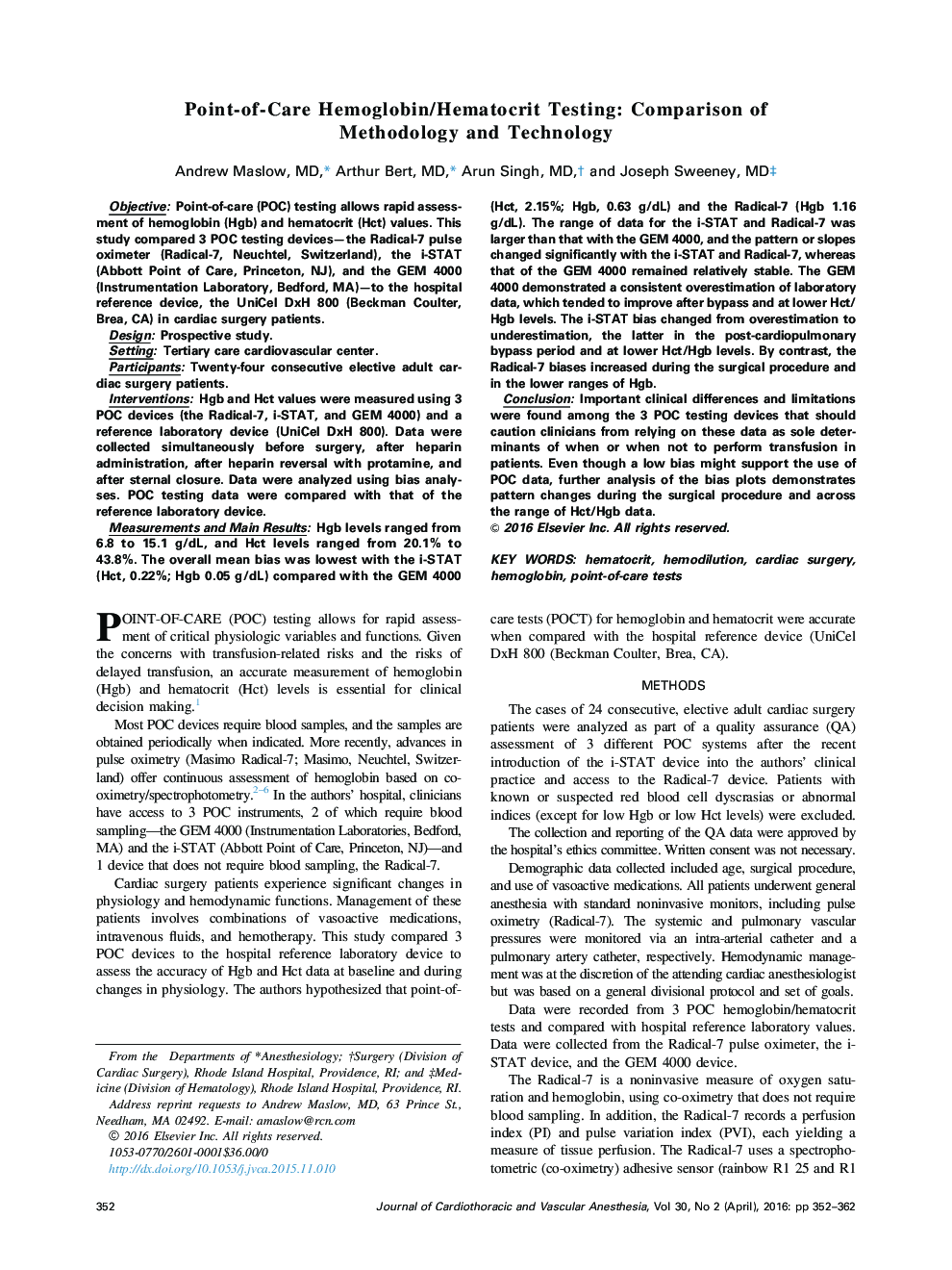| کد مقاله | کد نشریه | سال انتشار | مقاله انگلیسی | نسخه تمام متن |
|---|---|---|---|---|
| 2758871 | 1150142 | 2016 | 11 صفحه PDF | دانلود رایگان |
ObjectivePoint-of-care (POC) testing allows rapid assessment of hemoglobin (Hgb) and hematocrit (Hct) values. This study compared 3 POC testing devices—the Radical-7 pulse oximeter (Radical-7, Neuchȃtel, Switzerland), the i-STAT (Abbott Point of Care, Princeton, NJ), and the GEM 4000 (Instrumentation Laboratory, Bedford, MA)—to the hospital reference device, the UniCel DxH 800 (Beckman Coulter, Brea, CA) in cardiac surgery patients.DesignProspective study.SettingTertiary care cardiovascular center.ParticipantsTwenty-four consecutive elective adult cardiac surgery patients.InterventionsHgb and Hct values were measured using 3 POC devices (the Radical-7, i-STAT, and GEM 4000) and a reference laboratory device (UniCel DxH 800). Data were collected simultaneously before surgery, after heparin administration, after heparin reversal with protamine, and after sternal closure. Data were analyzed using bias analyses. POC testing data were compared with that of the reference laboratory device.Measurements and Main ResultsHgb levels ranged from 6.8 to 15.1 g/dL, and Hct levels ranged from 20.1% to 43.8%. The overall mean bias was lowest with the i-STAT (Hct, 0.22%; Hgb 0.05 g/dL) compared with the GEM 4000 (Hct, 2.15%; Hgb, 0.63 g/dL) and the Radical-7 (Hgb 1.16 g/dL). The range of data for the i-STAT and Radical-7 was larger than that with the GEM 4000, and the pattern or slopes changed significantly with the i-STAT and Radical-7, whereas that of the GEM 4000 remained relatively stable. The GEM 4000 demonstrated a consistent overestimation of laboratory data, which tended to improve after bypass and at lower Hct/Hgb levels. The i-STAT bias changed from overestimation to underestimation, the latter in the post-cardiopulmonary bypass period and at lower Hct/Hgb levels. By contrast, the Radical-7 biases increased during the surgical procedure and in the lower ranges of Hgb.ConclusionImportant clinical differences and limitations were found among the 3 POC testing devices that should caution clinicians from relying on these data as sole determinants of when or when not to perform transfusion in patients. Even though a low bias might support the use of POC data, further analysis of the bias plots demonstrates pattern changes during the surgical procedure and across the range of Hct/Hgb data.
Journal: Journal of Cardiothoracic and Vascular Anesthesia - Volume 30, Issue 2, April 2016, Pages 352–362
